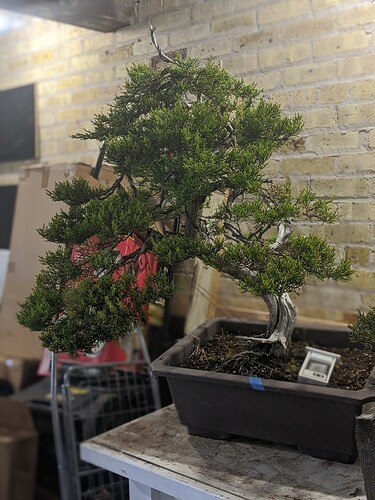Anyone have examples of ashe juniper bonsai? Or just thoughts in general of it being a bonsai? thank you!
I personally do not have any…yet. There are many members of my club, however, that do have them. They are a popular tree to collect, as they are native to Texas. Very hardy, drought and heat tolerant in the wild. The roots tend to run both wide and deep so collection can be hard, they are viewed as a problem here by many due to their aggressive water consumption, and pollen. From what I have seen they adapt well to the container. It is on my short list for the next year. Good deadwood, scraggly bark. Great trees.
Ryan also discusses it on the pod cast…Texas Barbecue & Field Collecting,.
thanks moon. I’ve stumbled upon a few that looked to have very interesting bonsai potential. but couldn’t find many examples once i looked online. I’m imagining best time to collect would be jan-feb?
That is when my club does it’s collection trips. I will check next month and ask members that I know have them when they collected them and if they have good tips. Check out that podcast. I can’t remember if Ryan and Colton talk collection times or not.
Hey,
I collected 5 Ashe Junipers from a man who allowed me to collect on escarpments on his ranch. This has been the most difficult species for me to collect to date. The calcareous rock of the Austin area along with the nature of the rooting of the tree demanded a LARGE amount of original soil be collected with the trees. I collected them in August and September and transported them to Houston, now they are in Knoxville. Of the five two died but the other three survived. They have very brittle roots and root damage can be a concern. They were collected 2 years ago and last summer they pushed out with much foliage, this spring I did my first potting reduction, that is I removed 50% of the original soil, so I will need at least two more reductions just to get most of the original soil out. The tree over all does very well in container conditions and the ones I have have pushed out large quantities of roots in the non-native medium. So one can have success with them just ensure a goodly quantity of original soil is extracted to get the most number of roots as possible. I did not mist my trees btw and perhaps had I done that even may have had a better survival %.
I second everything that Gary says here. I spoke with some of my club guys this weekend. They had good success with collected Ashe Junipers from Texas. The main concern was roots and getting enough. They tend to be brittle in the natural growing environment and are usually found in very rocky soils, collection was said to be physically taxing. After collection box grown in pumice for a year, with a very high success rate of survival. 50% reduction of field soil at first repot. Once in the containerized environment very strong growers and as hardy as they come. A great containerized tree. Collection time of year was Jan Feb or Oct Nov.
Four years ago when I moved to Massachusetts, on my first trip to New England Bonsai Gardens (still with Hitoshi and Teddi at the time), I was cruising the 70% off tent and I saw a juniper marked down to $35. It looked like an octopus that someone dropped off the top of a building with arms everywhere! It had no identification and I assumed it was a prostrata. At that point, I had only been doing research and digging up trees where I had lived previously in Maine. I didn’t know that much about working juniper and I chopped it up pretty good. I actually took every branch off but one! It survived despite the major crown loss. I left it in the original pot for two years. When I finally got around to repotting it, I found an old wire around the trunk that was tied to a beat metal dogtag buried in the soil. It was engraved “Ozark Ashe.”
You can see the foliage it quite bushy ATM. It’s taken four years to build it up! I will style it more next spring.
When compared side-by-side with my big prostrata, the differences between the two species are more obvious. The foliage is richer colored and the berries are much plumper. The scale/needle morphology is also dissimilar.
